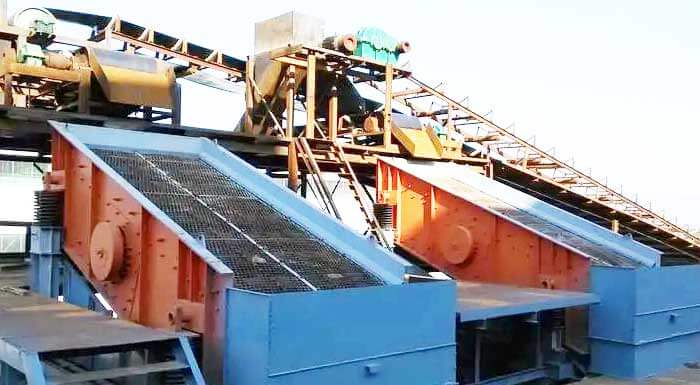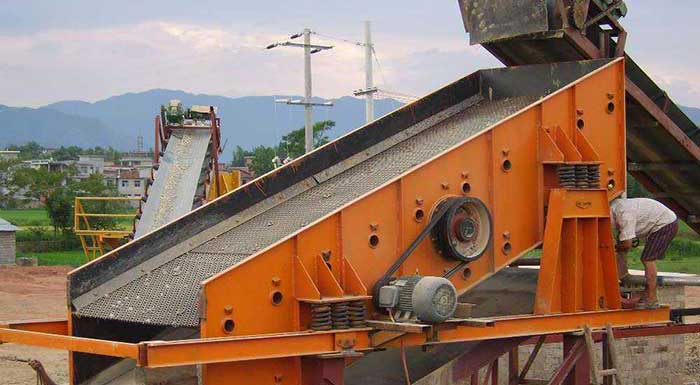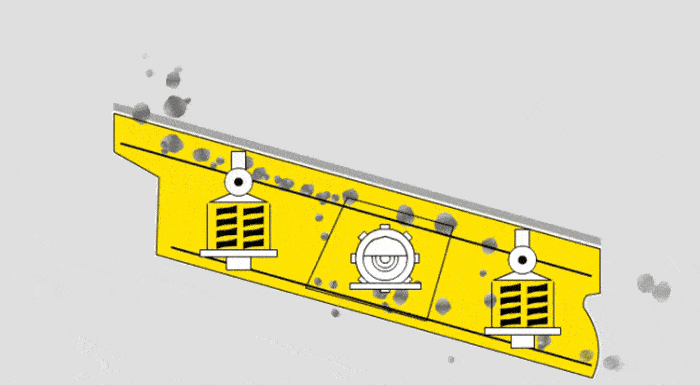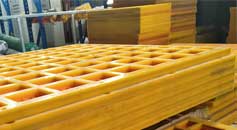10 Stop Doing and 6 Must do To your Vibrating Screen
Vibrating screens are a critical component in many industrial processes, including mineral processing, coal preparation, and recycling. They are designed to separate materials by size and are capable of handling large volumes of material. However, there are certain behaviors that can damage the screen and reduce its effectiveness. Here are 10 things you must stop doing to your vibrating screen.

10 Things You Must Stop Doing to Your Vibrating Screen
1. Overloading the Screen: One of the most common mistakes is overloading the screen with too much material. This causes undue stress on the machine and can lead to premature failure.
2. Using the Wrong Screen: Using the wrong screen for your application can also cause problems. The wrong screen may not be able to handle the volume of material, and the wrong aperture size may allow oversized material to pass through.
3. Poor Maintenance: Neglecting to clean or maintain the screen can lead to buildup of material which can cause blockages and reduce the effectiveness of the machine.
4. Neglecting Safety Precautions: Vibrating screens are powerful machines that can pose a danger to operators. Neglecting proper safety precautions, such as wearing personal protective equipment and ensuring proper grounding of the machine, can increase the risk of accidents.
5. Failing to Adjust Settings: Adjusting the settings on the screen, such as amplitude and frequency, can optimize its performance. Failing to adjust these settings can lead to decreased efficiency and premature wear.
6. Insufficient Lubrication: Vibrating screens require proper lubrication to function smoothly. Failing to use or replenish lubricant can cause increased friction, leading to premature wear and decreased effectiveness.

7. Excessive Vibration: Excessive vibration can cause damage to the machine and result in decreased efficiency. This can be caused by a variety of factors, including an unbalanced machine, improper installation, or failing to adjust the settings properly.
8. Missing or Damaged Components: Missing or damaged components, such as springs or bearings, can cause the machine to function improperly and can lead to premature failure.
9. Abrasive Material: Certain materials, such as sharp or abrasive particles, can cause damage to the screen. These materials should be handled with care and preventive measures should be taken.
10. Poorly Trained Operators: Vibrating screens require skilled operators who understand how to operate and maintain the machine properly. Poorly trained operators can cause damage to the machine and reduce its effectiveness.

6 Maintenance Tips to Keep Your Vibrating Screen Efficient
Maintaining a vibrating screen is crucial to ensuring that it continues to function properly and provide effective screening. Proper maintenance can prevent equipment failure, reduce downtime, and minimize production costs. In this article, we will explore some tips for maintaining your vibrating screen.
1. Installation Inspection
Ensure that your equipment is installed correctly. Any improperly installed or poorly aligned equipment can cause premature wear and damage to components. Proper installation will also ensure that the equipment runs smoothly and efficiently.
2. Keep Screen Transparent
Inspect the screen components on a regular basis. Look for signs of wear and damage in the screen mesh, support structure, and drive system. If any issues are found, replace the damaged components immediately. Failure to do so could cause more significant damage later on.
3. Cleaning Screen Panel
Cleaning your screen is also essential for proper maintenance. Buildup of material on the screen can cause it to become less effective at screening. Use a soft-bristled brush or compressed air to clean the screen surface and remove any build-up. Do not use water or steam to clean your screen as this can cause damage to the delicate components of the equipment.
4. Lubrication of Accessories
Lubrication is another important aspect of screen maintenance. Bearings and joints should be lubricated regularly as outlined in the manufacturer’s manual. Proper lubrication will help to reduce wear and eliminate excessive vibration and noise. Make sure to use the recommended lubricant.
5. Drive System Maintenance
The drive system is an essential component of the vibrating screen. Regularly inspect belts and pulleys for signs of wear and replace them as necessary. Proper tension in the drive belts should also be maintained to ensure optimal performance.

6. Maintenance Log
Keep a maintenance log. When you perform maintenance, record the date and the work performed. This log will help you keep track of the progress of your maintenance program and will provide valuable information to use when scheduling maintenance tasks.
In conclusion, maintaining your vibrating screen is crucial for its optimal performance and longevity. Install your equipment correctly, inspect it regularly, keep it clean, lubricate it properly, and keep track of maintenance events in a log. These simple steps will go a long way in reducing downtime and overall maintenance costs.
 How To Choose Linear Vibrating Screen
How To Choose Linear Vibrating Screen 5 Tips of Vibrating Screen Problems & Solutions
5 Tips of Vibrating Screen Problems & Solutions Become A Vibrating Screen Expert in 3 Minutes
Become A Vibrating Screen Expert in 3 Minutes Vibrating Screen Mesh Types
Vibrating Screen Mesh Types



